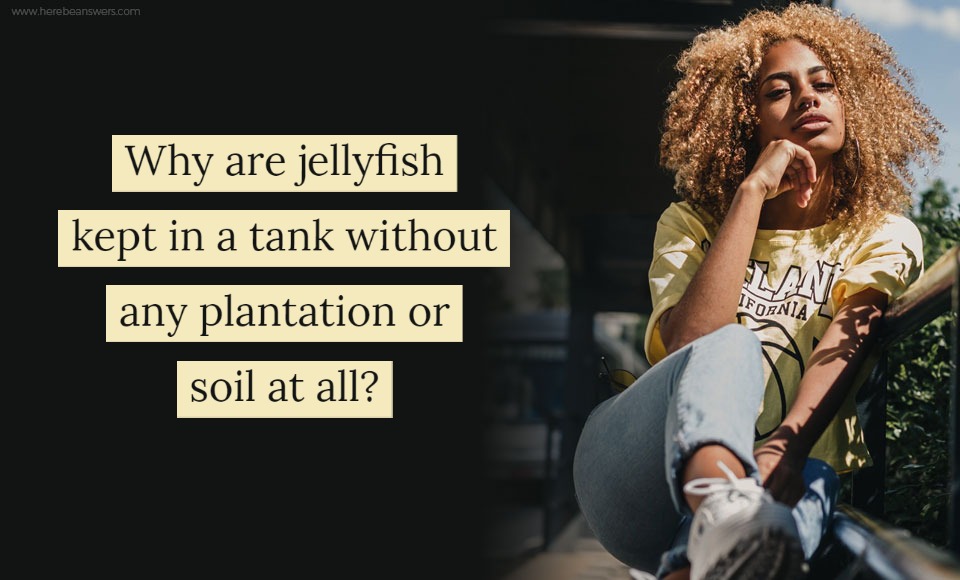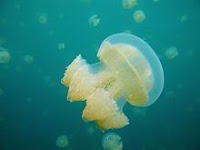Most tanks and aquariums have a lot of rocks, gravel, plants, and other accessories inside them. These additions are mostly for aesthetics, but also to make the inhabitants feel at home. Certain fishes and other creatures you might keep in a tank may want to hide themselves at some point, for instance, so they’d be glad of a plant or large rock for a temporary shield from prying eyes. In case you are looking to buy live aquarium plants in Australia you can checkout products at Aqurzon.com
However, you may have noticed that when we keep jellyfish in captivity, they’re usually inside tanks without any sort of soil, plants, or decorations. The main reason for this is that jellyfish are very delicate and hence extremely hard to keep in tanks. Their composition is mostly water, with very thin membranes making up their body structure.
When we understand the kind of body a jellyfish has, it’s evident that any sharp object can rip them apart fairly easily. Of course, there are lots of larger jellies that have evolved to be more durable or can grow big enough to withstand damage (like the Stygiomedusa gigantea, or the larger fried egg jellyfish specimens). Still, the vast majority of this species are small and mostly helpless except for their unique stinging cells. Fortunately, that doesn’t affect their ability to survive in a tank.
In their natural environment, jellyfish usually just float freely with the currents in the open ocean, so there’s nothing for them to bump up against (except predators). They aren’t strong swimmers either, so they can get stranded or trapped easily if the current washes them onto the shore or pushes them into a confined area.
In order to most closely replicate their natural environment, jellies need tanks with rounded edges to keep from getting stuck in corners, a gentle current to propel them around, and a small amount of food suspended in the water.
A tank that’s specially designed for jellyfish in this manner is called a kreisel. They have very specific requirements for temperature and water pH as well. Their tanks should have no gravel since they could scrape against the grains and tear up their membranes. There should also be no plants, since they could get stuck in the leaves.
In addition to all these precautions, the jellyfish enthusiast or caretaker also has to make sure that the water in a jellyfish tank remains clean and clear. In order to maintain this pristine state, the tank needs an excellent filtration system with a powerful suction and flow. The emptiness of the tank or aquarium hence also helps in keeping the inhabitants away from the filtration systems. Click here to learn more about the aquariums. Since jellyfish are weak swimmers, they need all the help they can get in keeping themselves safe from dangers.
If the jellyfish do bump into something and sustain an injury, they usually won’t recover from the damage. In fact, there are certain jellyfish species that are so fragile that they simply can’t be collected. It’s the hardier species that can even survive in a tank, so one can imagine the frailty of those that we can only see in videos and photographs.
Also, some forms of jellyfish flatten themselves against the sides of their tanks. These create a beautiful algae-like appearance that’s very pleasing to the observer. If there were plants floating inside the tank as well, they would probably spoil the effect.
Finally, there’s also the fact that jellyfish simply don’t need things like soil or plants in their vicinity. They’re pelagic creatures and feed mostly on marine animals that they find in the open waters. Having any additions in a jellyfish tank would only be for the benefit of any observers, which simply isn’t reason enough to risk injury to these delicate creatures. In order to avoid any unwanted side effects, it’s recommended to keep such tanks as free of additions as possible. This is naturally an easier choice, as it also makes the tank cleaning much quicker.
Related posts:
- How do insects like mosquitoes and bees infect us through their sting or bite?
- How does cockroach easily avoid a swipe? Which organ forewarns it about the attack?
- Why do ants touch each other with their heads when they meet? Why do they walk in a file one behind another?
- Why does tail of a house-lizard (gecko) jerk and toss about for some time even after cutting off from the body?

